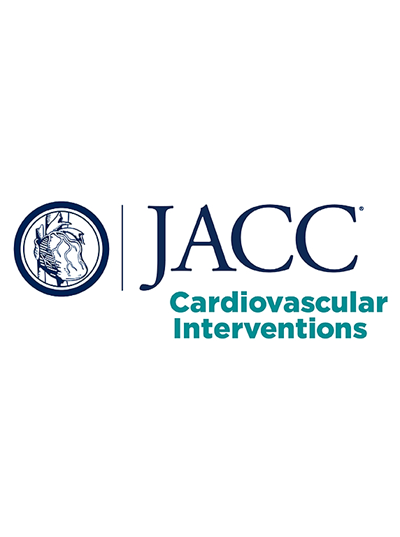Late Clinical Outcomes of Balloon-Expandable Valves in Small Annuli
IF 11.7
1区 医学
Q1 CARDIAC & CARDIOVASCULAR SYSTEMS
引用次数: 0
Abstract
Background
Short-term clinical outcomes after transcatheter aortic valve replacement (TAVR) are similar in individuals with small or large annuli. The longer term impact of prosthesis-patient mismatch (PPM) and mean gradient (MG) post-TAVR in these patients remains controversial.
Objectives
The aim of this study was to investigate 5-year outcomes in patients with small vs large annuli.
Methods
Patients from the PARTNER (Placement of Aortic Transcatheter Valves) 2 SAPIEN 3 intermediate-risk registry and the PARTNER 3 low-risk randomized controlled trial were grouped according to small (≤430 mm2) or large (>430 mm2) annular size. The primary endpoint was a composite of all-cause death, disabling stroke, or heart failure hospitalization. In addition, the relationships between both PPM and post-TAVR MG and clinical outcomes were analyzed.
Results
In total, 1,355 patients were included: 476 with small annuli (376.7 ± 41.9 mm2) and 879 with large annuli (518.3 ± 58.0 mm2). Patients with small annuli were older (age 79.6 ± 7.1 years vs 78.7 ± 7.8 years; P = 0.047), were more often female (75.0% vs 16.2%; P < 0.0001), had higher baseline Society of Thoracic Surgeons scores (4.3% ± 1.93% vs 4.0% ± 1.93%; P < 0.0001), and had higher left ventricular ejection fractions (66.3% ± 15.82% vs 59.7% ± 13.68%; P < 0.0001). Primary endpoint rates were similar at 1 year (7.8% vs 8.0%; P = 0.94) and 5 years (36.3% vs 35.8%; P = 0.83). Bioprosthetic valve failure was infrequent at 5 years in both groups (2.9% vs 2.1%; P = 0.46). Among female patients, outcomes were similar for small vs large annuli (primary endpoint; 33.6% vs 34.2%; P = 0.90). Among patients with small annuli, there was no association between 5-year outcomes and any severity of PPM (P = 0.22) or 30-day MG (P for nonlinearity = 0.96).
Conclusions
Five-year clinical outcomes were excellent and comparable between patients with small vs large aortic annuli. Outcomes in patients with small annuli were not affected by 30-day MG or PPM.
求助全文
约1分钟内获得全文
求助全文
来源期刊

JACC. Cardiovascular interventions
CARDIAC & CARDIOVASCULAR SYSTEMS-
CiteScore
11.60
自引率
8.80%
发文量
756
审稿时长
4-8 weeks
期刊介绍:
JACC: Cardiovascular Interventions is a specialist journal launched by the Journal of the American College of Cardiology (JACC). It covers the entire field of interventional cardiovascular medicine, including cardiac, peripheral, and cerebrovascular interventions. The journal publishes studies that will impact the practice of interventional cardiovascular medicine, including clinical trials, experimental studies, and in-depth discussions by respected experts. To enhance visual understanding, the journal is published both in print and electronically, utilizing the latest technologies.
 求助内容:
求助内容: 应助结果提醒方式:
应助结果提醒方式:


